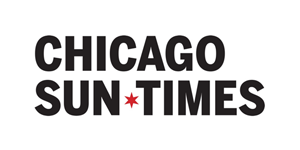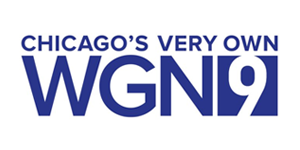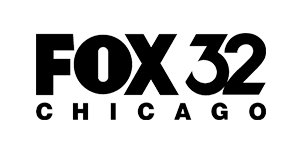
Learn More
Kinds of Commercial Driver’s Licenses
To drive a car, pickup truck, minivan, or SUV, drivers in the United States only need an ordinary driver’s license.
To drive larger vehicles or to transport passengers, heavy loads, or hazardous materials, drivers must also obtain a commercial driver’s license, also known as a CDL. A CDL requires specialized knowledge and a driving test for the driving the license allows. Some CDL drivers, like school bus drivers, must also pass a background check.
Every driver must have a CDL when their combined weight (vehicle and trailer) exceeds 26,001 pounds. Three classes of CDL also apply to specific types of cars and cargo.
Class A CDL
A Class A CDL is required when driving “any combination of vehicles” with a total weight of 26,001 pounds (11,794 kilograms) or more. The 26,001-pound weight limit includes any “towed unit” (like a trailer or another vehicle) that weighs more than 10,000 pounds (4,536 kilograms).
A “combination,” for CDL purposes, connects a tractor unit with one or more trailers using a fifth wheel or a converter dolly that allows the vehicle to bend in the middle. A commonly-seen example of a vehicle requiring a Class A CDL is a semi-tractor hauling a cargo trailer.
A fully-loaded tractor-trailer may weigh up to 80,000 pounds under ordinary conditions or more if the operator has permission to exceed typical weight limits. A typical sport utility vehicle (SUV) weighs about 3,500 pounds.
Class B CDL
A Class B CDL is required when driving a vehicle weighing 26,001 pounds (11,795 kilograms), including a towed unit weighing 10,000 pounds (4,536 kilograms) or less.
CDL holders often remember the difference between a Class A and Class B CDL by saying that Class A allows them to drive trucks that bend in the middle, while Class B does not. Yet Class B drivers can still tow small trailers and other vehicles, as long as what they are pulling weighs 10,000 pounds or less.
Common examples of vehicles that require a Class B CDL are school, city, and charter buses, as well as recreational vehicles (RVs).
Class C CDL
A Class C CDL covers single and combination vehicles that don’t fall under the Class A or Class B guidelines. A Class C CDL is required if the car is:
- Designed to transport more than 15 passengers (the driver counts as a passenger),
- Transporting material designated as “hazardous” under 49 USC 5103 and is required to show a placard under 49 CFR 172, or
- Transporting any quantity of a material listed as a “select agent or toxin” in 42 CFR 73.
Some large vans and smaller buses, such as those often used by school districts for wheelchair transport, may require a Class C CDL.
49 USC 5103 gives the Secretary of Transportation the authority to determine which materials are hazardous to transport by road and to set requirements for identifying and securing those materials. The specific materials and conditions are listed in the Code of Federal Regulations, at 49 CFR 172.
The Code of Federal Regulations (CFR) also defines “select agents and toxins” and sets out rules for handling these materials.
It’s important to note that the rules for a Class C CDL only apply when the rules for a Class A or Class B CDL do not. For instance, a semi-tractor-trailer hauling hazardous materials, as defined by 49 CFR 172, would still require a Class A CDL holder to drive due to the vehicle’s weight.
Types of CDL Endorsements
In addition to meeting the basic requirements for each class of CDL, drivers of commercial vehicles may be required to undergo additional training to haul certain types of cargo. This additional training is expressed in the form of an “endorsement.” Endorsements are often visible on the CDL holder’s driver’s license as single letters.
Endorsement codes recognized by the Federal Motor Carrier Safety Administration (FMCSA) include the following:
- T – an endorsement allowing the driver to pull two or three trailers.
- P* – an endorsement enabling the driver to carry passengers (most often used for bus drivers).
- N – an endorsement allowing a driver to pull a tank (commonly used for agricultural and industrial purposes).
- H* – an endorsement enabling a driver to transport hazardous materials.
- X – a combination endorsement for transporting both tanks and dangerous materials.
- S* – an endorsement for school bus drivers.
In addition, a person studying to earn a CDL may have up to three endorsements on their Commercial Learners’ Permit (CLP). The CLP endorsements are:
- P – the student is learning to drive with passengers but may not carry passengers other than official auditors/inspectors, test examiners, other trainees, and a CDL holder supervising the CLP holder.
- S – the student is learning to drive a school bus but currently may not carry passengers other than the types of passengers a P endorsement holder may have.
- N – the student is learning to drive a tank vehicle but may only drive empty tanks. The student may not pull any tank containing hazardous materials unless there is no residue.
The FMCSA also recognizes several restrictions on CDLs. Restrictions often address gaps in knowledge or learning that have not yet been achieved. For example, a CDL holder may also have one of the following restrictions:
- L – The driver has yet to demonstrate mastery of complete air brake systems.
- Z – The driver took their test in a vehicle with an air-over hydraulic brake system. They may not yet operate a car with a complete air brake system.
- E – The driver took their test in a vehicle with an automatic transmission.
- O – The driver took the Class A CDL test but did not demonstrate the knowledge required to operate a vehicle with a fifth-wheel connection.
- M – The driver has a Class A CDL but took their passenger or school bus endorsement test in a Class B vehicle. The driver may only transport passengers in Class B or C vehicles.
- N – The driver has a Class B CDL but took their passenger or school bus endorsement test in a Class C vehicle. The driver may only transport passengers in Class C vehicles.
- V – The driver has a medical variance in their Department of Transportation records.
Both endorsements and restrictions may change as drivers learn new skills. For instance, a driver with an L restriction may have that restriction removed by demonstrating the required knowledge of entire air brake systems.
Responsibilities of CDL Holders
Before 1986, anyone with a regular driver’s license could operate a commercial motor vehicle (CMV). In October 1986, the Commercial Motor Vehicle Safety Act became law. Since April 1992, the law has required that every driver of commercial vehicles must have a CDL – and the training that goes with it.
Today, a driver must be at least 21 years old to receive a CDL that allows them to drive across state lines. Some states offer a state-level commercial driver’s license to drivers at least 18 years old. These drivers may only operate within the state until they reach their 21st birthday.
To receive a commercial driver’s license, a driver must pass a written knowledge test, a physical health examination, drug testing, and meet other federal and state requirements. Drivers must also undergo periodic physical health checkups and drug tests to maintain their CDLs. School bus drivers are required to undergo a background check. Some types of endorsements require drivers to pass a road test and a written test of their knowledge.
The responsibilities of a CDL don’t end when the driver receives their license or endorsement. Every CDL holder is also expected to perform a pre-trip inspection every time they set out in their vehicle. A pre-trip inspection includes:
- Checking the vehicle’s fluid levels, operation of critical engine parts, tires, brakes, and suspension,
- Checking safety equipment, including fuses and onboard safety equipment like the fire extinguisher,
- Checking the cab and controls, including the seatbelts, shifter and clutch, parking brakes, gauges, windshield wipers, lights, and airbrake controls.
- For Class A vehicles, check the connection between the tractor and trailer, including the kingpin, fifth wheel, and bottom.
In addition to these federal requirements, some companies hold their drivers to additional standards. For instance, some companies perform background checks as part of the hiring process for all drivers, not just school bus drivers. Company policy at some businesses may also require drivers to check that cargo is secured both before drivers leave the loading dock and at various times during the drive itself. Understanding the laws and the individual company policies helps paint a clearer picture of a particular CDL holder’s responsibilities.
Contact Briskman Briskman & Greenberg Today
A commercial driver’s license offers certain privileges that ordinary vehicle drivers do not have. With those privileges come additional responsibilities – not only for CDL holders but also for their employers.
If you’ve been injured as a CDL driver on the job or a commercial driver’s negligence has injured you, you must speak to an attorney who understands the rules and details surrounding commercial driver’s licenses.
If you have recently been injured in a Chicago trucking accident, give the lawyers at Briskman Briskman & Greenberg a call. We are here to help you understand why your claim was denied and what can be done about it. We have been helping accident victims bring claims against even the largest insurance companies for more than 30 years. With our skilled negotiators on your side, you may be able to secure a much larger settlement offer. To learn more about what you can do after a trucking accident schedule a free consultation, call 877-595-4878. You can also get ahold of us through our online form, and one of our lawyers will contact you.




SEEN ON:







